#mother to child hiv transmission
Explore tagged Tumblr posts
Text
youtube
Call : +917997101303 | Whatsapp : https://wa.me/917997101505 | Website : https://fidicus.com
నాకున్న HIV బేబీ కి రాకుండా కనగలనా? How To Stop HIV trasnmission from HIV Mother To Baby | Treatment
Learn how to prevent HIV transmission from mother to baby with effective measures during pregnancy, delivery, and breastfeeding. This video covers key steps, including antiretroviral therapy (ART) for mothers, safe delivery methods, and the importance of medical care. Discover how timely intervention can drastically reduce the risk of HIV transmission and ensure a healthy start for the baby. Watch now to explore homeopathic support alongside conventional treatment!
Dr. Bharadwaz | HIV AIDS | Health & Fitness | Homeopathy, Medicine & Surgery | Clinical Research
#HIVPrevention #MotherToChildTransmission #HIVAwareness #HealthyPregnancy #StopHIV
#DrBharadwaz #Helseform #Fidicus #Clingenious
#ClingeniousHealth #HelseformFitness #FidicusHomeopathy #ClingeniousResearch
#FidicusHIV #HIV #AIDS #HumanImmunodeficiencyViruses #AcquiredImmuneDeficiencySyndrome
#Treatment #Cure #Prevent #Relieve #Medicine #Vaccine
#AlternativeTherapy #AdjuvantTherapy #AlternativeMedicine #AlternativeSystem
Specialty Clinic Fidicus HIV highest success with homeopathy Improve Wellness | Increase Longevity | Addresses Questions
#transmission#mother-to-child transmission#mother#hiv transmission mother to child#mother to child transmission#how to prevent mother to child transmission#mother to child hiv transmission#mother to child transmission of hiv#mother to child transmission of std#risk of mother to child transmission#prevention of mother to child transmission#elimination of mother to child hiv transmission#preventing mother-to-child transmission#hiv mother to child#mothers#Youtube
0 notes
Text
#elizabeth glaser#paul michael glaser#ariel glaser#jake glaser#mother to child hiv transmission#pediatric aids#iv transfusion
0 notes
Text
Omg and people two cubes down from you have no idea what your abbreviations and acronyms and special jargon are and sometimes you'll be talking with another professional in the field and *think* you're both using the same acronym but you're NOT.
No one tells you when you get a Big Serious Job™ how many fucking abbreviations you’ll be forced to learn.
#this is enough of a problem that at the big national conference i went to for work this year the us dshs had clearly instructed all the#presenters to say the full goddamn name and not just use the acronym. department of state health services (dshs said dishes)#health resources and services administration (hrsa said hersa)#and that's not even for the really particular acronyms & abbreviations lol#but it did have to be intelligible to people at all levels of expertise so. like i get it#but it didn't stop presenters from throwing AZT around! me mentally updating them: ZDV XD which is still not the full modern name#anyway azidothymidine (azt) aka zidovudine (zdv) brand name Retrovir was the first and for way too long only effective ART antiretroviral#therapy and is still used today especially to prevent mother-to-child HIV human immunodeficiency virus transmission but also in other uses#and my silly brain took quite a while to stop seeing azithromycin and calling it azt. yes the letters are there. no the antibiotic isn't ART#and DEFINITELY ABSOLUTELY do not put such notes as “pt was administered AZT” when it was in fact azithromycin. oh but the abbreviation is#just sitting right there...so easy...NO. NOMENCLATURE CLARITY IN NOTES TO BE READ BY OTHERS. it is important.#meanwhile my team's dshs consultant be like argh yet another event note with random abbreviations#it's uh...it's hard not to use them...
43K notes
·
View notes
Text
Here's the top 2 stories from each of Fix The News's six categories:
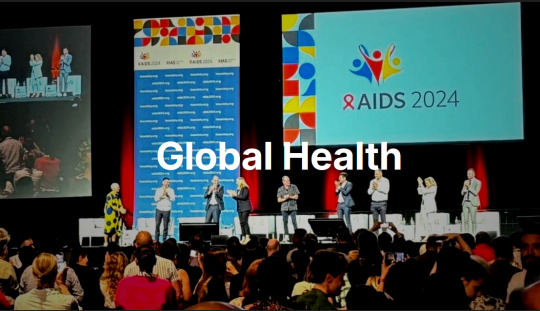
1. A game-changing HIV drug was the biggest story of 2024
In what Science called the 'breakthrough of the year', researchers revealed in June that a twice-yearly drug called lenacapavir reduced HIV infections in a trial in Africa to zero—an astonishing 100% efficacy, and the closest thing to a vaccine in four decades of research. Things moved quick; by October, the maker of the drug, Gilead, had agreed to produce an affordable version for 120 resource-limited countries, and by December trials were underway for a version that could prevent infection with just a single shot per year. 'I got cold shivers. After all our years of sadness, particularly over vaccines, this truly is surreal.'
2. Another incredible year for disease elimination
Jordan became the first country to eliminate leprosy, Chad eliminated sleeping sickness, Guinea eliminated maternal and neonatal tetanus, Belize, Jamaica, and Saint Vincent & the Grenadines eliminated mother-to-child transmission of HIV and syphilis, India achieved the WHO target for eliminating black fever, India, Viet Nam and Pakistan eliminated trachoma, the world’s leading infectious cause of blindness, and Brazil and Timor Leste eliminated elephantiasis.

15. The EU passed a landmark nature restoration law
When countries pass environmental legislation, it’s big news; when an entire continent mandates the protection of nature, it signals a profound shift. Under the new law, which passed on a knife-edge vote in June 2024, all 27 member states are legally required to restore at least 20% of land and sea by 2030, and degraded ecosystems by 2050. This is one of the world’s most ambitious pieces of legislation and it didn’t come easy; but the payoff will be huge - from tackling biodiversity loss and climate change to enhancing food security.
16. Deforestation in the Amazon halved in two years
Brazil’s space agency, INPE, confirmed a second consecutive year of declining deforestation in the Brazilian Amazon. That means deforestation rates have roughly halved under Lula, and are now approaching all time lows. In Colombia, deforestation dropped by 36%, hitting a 23-year low. Bolivia created four new protected areas, a huge new new state park was created in Pará to protect some of the oldest and tallest tree species in the tropical Americas and a new study revealed that more of the Amazon is protected than we originally thought, with 62.4% of the rainforest now under some form of conservation management.
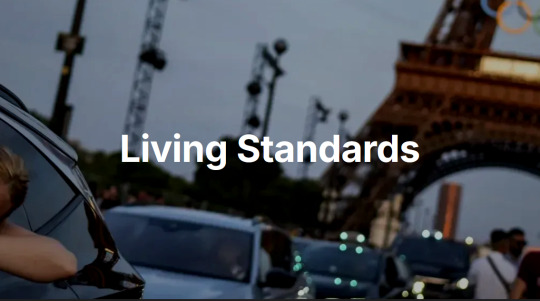
39. Millions more children got an education
Staggering statistics incoming: between 2000 and 2023, the number of children and adolescents not attending school fell by nearly 40%, and Eastern and Southern Africa, achieved gender parity in primary education, with 25 million more girls are enrolled in primary school today than in the early 2000s. Since 2015, an additional 110 million children have entered school worldwide, and 40 million more young people are completing secondary school.
40. We fed around a quarter of the world's kids at school
Around 480 million students are now getting fed at school, up from 319 million before the pandemic, and 104 countries have joined a global coalition to promote school meals, School feeding policies are now in place in 48 countries in Africa, and this year Nigeria announced plans to expand school meals to 20 million children by 2025, Kenya committed to expanding its program from two million to ten million children by the end of the decade, and Indonesia pledged to provide lunches to all 78 million of its students, in what will be the world's largest free school meals program.

50. Solar installations shattered all records
Global solar installations look set to reach an unprecedented 660GW in 2024, up 50% from 2023's previous record. The pace of deployment has become almost unfathomable - in 2010, it took a month to install a gigawatt, by 2016, a week, and in 2024, just 12 hours. Solar has become not just the cheapest form of new electricity in history, but the fastest-growing energy technology ever deployed, and the International Energy Agency said that the pace of deployment is now ahead of the trajectory required for net zero by 2050.
51. Battery storage transformed the economics of renewables
Global battery storage capacity surged 76% in 2024, making investments in solar and wind energy much more attractive, and vice-versa. As with solar, the pace of change stunned even the most cynical observers. Price wars between the big Chinese manufacturers pushed battery costs to record lows, and global battery manufacturing capacity increased by 42%, setting the stage for future growth in both grid storage and electric vehicles - crucial for the clean flexibility required by a renewables-dominated electricity system. The world's first large-scale grid battery installation only went online seven years ago; by next year, global battery storage capacity will exceed that of pumped hydro.
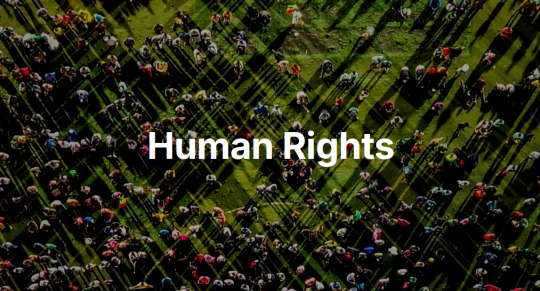
65. Democracy proved remarkably resilient in a record year of elections
More than two billion people went to the polls this year, and democracy fared far better than most people expected, with solid voter turnout, limited election manipulation, and evidence of incumbent governments being tamed. It wasn't all good news, but Indonesia saw the world's biggest one day election, Indian voters rejected authoritarianism, South Korea's democratic institutions did the same, Bangladesh promised free and fair elections following a 'people's victory', Senegal, Sri Lanka and Botswana saw peaceful transfers of power to new leaders after decades of single party rule, and Syria saw the end of one of the world's most horrific authoritarian regimes.
66. Global leaders committed to ending violence against children
In early November, while the eyes of the world were on the US election, an event took place that may prove to be a far more consequential for humanity. Five countries pledged to end corporal punishment in all settings, two more pledged to end it in schools, and another 12, including Bangladesh and Nigeria, accepted recommendations earlier in the year to end corporal punishment of children in all settings. In total, in 2024 more than 100 countries made some kind of commitment to ending violence against children. Together, these countries are home to hundreds of millions of children, with the WHO calling the move a 'fundamental shift.'

73. Space exploration hit new milestones
NASA’s Europa Clipper began a 2.9 billion kilometre voyage to Jupiter to investigate a moon that may have conditions for life; astronomers identified an ice world with a possible atmosphere in the habitable zone; and the James Webb Telescope found the farthest known galaxy. Closer to Earth, China landed on the far side of the moon, the Polaris Dawn crew made a historic trip to orbit, and Starship moved closer to operational use – and maybe one day, to travel to Mars.
74. Next-generation materials advanced
A mind-boggling year for material science. Artificial intelligence helped identify a solid-state electrolyte that could slash lithium use in batteries by 70%, and an Apple supplier announced a battery material that can deliver around 100 times better energy density. Researchers created an insulating synthetic sapphire material 1.25 nanometers thick, plus the world’s thinnest lens, just three atoms across. The world’s first functioning graphene-based semiconductor was unveiled (the long-awaited ‘wonder material’ may finally be coming of age!) and a team at Berkeley invented a fluffy yellow powder that could be a game changer for removing carbon from the atmosphere.
-via Fix The News, December 19, 2024
#renumbered this to reflect the article numbering#and highlight just how many stories of hope there are#and how many successes each labeled story contains#2024#good news#hope#hope posting#hopeposting#hopepunk#conservation#sustainability#public health#energy#quality of life#human rights#science and technology
3K notes
·
View notes
Text
Vertical Transmission
Pathogen transfer from mother to child
Occurs in utero
Example = HIV

Patreon
#studyblr#notes#my notes#microbiology#microbio#microbiology notes#microbio notes#molecular biology#microorganisms#pathogens#biology#bio#biology notes#bio notes#science#life science#biological science#health science#laboratory science#microscopy#microbial organisms#bacteria#bacteriology#note cards#flashcards#flash cards
3 notes
·
View notes
Text
Babies are not props to be used to validate gender feelz. And unfortunately this is just the start of a long list of why this guy should not be around kids
By Genevieve Gluck February 26, 2024
A trans-identified male residing in Canada who claims to be HIV positive and inserts progesterone rectally has been allegedly “breastfeeding” his child with the support of established medical clinics. Former men’s rights activist Murray Pearson, 52, who uses the name Margaret (Margie) Fancypants on social media, has been criticized after he shared an image of himself at a lactation clinic holding a young infant.
The photo was first posted three months ago on Reddit community titled r/TransLater, a board dedicated to males who transition later in life. In a post titled, “Milk, baby, milk! MTF 52,” wherein Pearson appears ecstatic that one “benefit of being transfemme” includes “that you can be pregnant and get drunk” with no undue problems.
“I have a baby almost 9 months old… I cannot wait to connect through feeding. And yes, I will stop drinking before it negatively affects anything they drink!” said Pearson

“This is a wish I have had for decades. My egg cracked a year ago on December 12 and I realized I could nurse my baby already on the way. That lit a fire under me, and I have gone from having lean pectoral muscle in March to full B-cups now and growing fast,” he added.
Pearson continues on to claim to have the assistance of “medical expertise,” including “five physicians in three clinics in two world class hospitals,” with one of the clinics named as the Goldfarb Clinic in Montreal.
“Two endocrinologists, Newman and Goldfarb, created a protocol to induce lactation in adoptive mothers,” Pearson explained in the comments. “It works for trans women as well, it works best when breast growth is mature but I am taking domperidone while my primary breast growth is underway. By an astonishing coincidence, I live right next to their breastfeeding institute!”
According to statements Pearson has made on social media, he began identifying as transgender in December 2022, and the following year, began taking progesterone. Approximately eight months ago, Pearson announced that he had found his “true self” as a result of performing in a drag show for a friend’s birthday celebration.
Earlier this month, Pearson described the first moment he believed he was a woman after trying on used women’s clothing at a thrift store. “I realized that the beautiful curvy woman in the mirror was the real me and I could be her every day… after more than two decades of stealth resistance. 87 days later I started spiro, 14 days after that estradiol, and now I am looooooving my boobs. Having curves without fakery is AMAZING.”
In a post made to the TransLater community last week, Pearson described how to insert the female hormone progesterone rectally, as a suppository, rather than swallowing it as a tablet.
“My breasts get a wonderful plumpness and pleasing jiggliness when I have had progesterone the night before…. You’ll need some lubricant (personal lube such as K-Y jelly or similar, or silicone personal lube which may be overkill, or some sort of non-irritating oil; I use my own mixture of cocoa butter and shea butter) to allow free clearance for the capsule… Some people simply pop the capsule in their mouth to use saliva, but I like a more effective lube,” he commented.
Pearson has also shared images of himself in a blue and pink wig attempting to eat ice cream containing the hormone in a seductive manner.

Disturbingly, Pearson has also revealed that he is HIV positive and is aware that the deadly virus can be transmitted through breastfeeding.
“I am HIV+, continuously controlled for 18.5 years now,” said Pearson in a Reddit post six months ago. “The viral suppression into undetectability [sic] makes sexual transmission impossible. But transmission through milk IS possible if viral load becomes detectable so I will test viral load monthly (opposed to semiannually) to keep a VERY close eye on that.”
In a shocking display of further disregard for the child’s health, Pearson speculated as to whether his experiment would qualify him as a candidate for the participation in academic research.
“Fortunately, Dr Lenore Goldfarb, creator of the protocol, has her clinic at the same hospital we birthed our baby in. I may even end up in the medical literature.” While again discussing his HIV status in relation to ‘breastfeeding’ a child, Pearson alleges that his case is being documented by infectious diseases researcher Dr. Marina Klein, who is affiliated with McGill University.
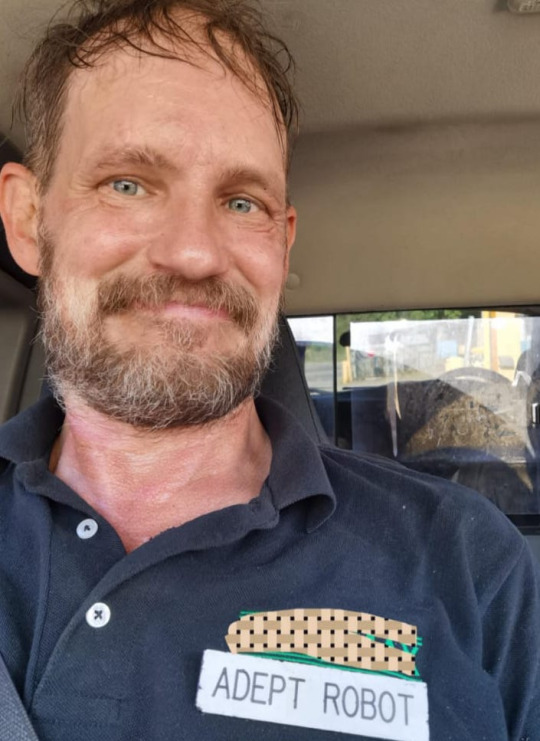
Pearson in a “before” picture posted to Reddit tracking his transitioning progress.
Reduxx reached out to Dr. Klein to request information on her involvement in Pearson’s experimental lactation, and she confirmed that she had been monitoring Pearson for his HIV infection at the Chronic Viral Illness Service of the McGill University Health Centre. However, she stated she had not been involved in his transition nor had she been consulted on his induction of lactation.
“It’s important to emphasize that we do not recommend breast feeding for people with HIV as this is the only way to be certain that no HIV transmission will occur after a baby is born,” Dr. Klein said in her response. “However, guidelines have evolved over time with the recognition that the risk of transmission is very low when HIV infection is undetectable with effective therapy … If, after informed discussion, a person expresses a wish to breastfeed they may chose to do so provided they are willing to follow a close protocol of viral monitoring and have their baby followed closely with pediatric specialists who would generally recommend that they receive preventive medication.”
Dr. Klein further states that Pearson had expressed a desire to breastfeed and then had been referred to an endocrinologist.
Prior to identifying as transgender, Pearson was involved in politically advocating for the US-based, anti-feminist men’s rights non-profit A Voice for Men (AVFM).
The organization was founded in 2009 by Paul Elam, who has said that there would no longer be “any place to hide on the internet” for “lying bitches,” and members associated with the group have previously published personal information about women who opposed their activities.
Pearson has linked to the organization’s website on his YouTube channel biography, where he has uploaded videos of himself advocating positions held by AVFM, such as accusing women of lying about sexual violence.

In one video shared in July 2013, titled “Rape, Posters, Traffic Lights and Consent,” Pearson claims that he was previously drugged and raped by a woman on the University of Alberta campus.
He also encourages discussion of posters produced by Men’s Rights Edmonton which featured the headline, ‘Don’t Be That Girl’, created with the intention of parodying an anti-rape campaign designed by a women’s rape crisis shelter, Sexual Assault Voices of Edmonton (SAVE), which used the slogan, ‘Don’t Be That Guy.’
Pearson has also been active in a Facebook group for “trans lesbians,” a term which labels men who call themselves transgender as same-sex attracted women.

Criticism of Pearson’s claims to be “lactating” and “breastfeeding” have focused on concerns that he is “motivated… to experience sexual arousal from lactation,” as one X user, Lulu Solomon, said.
“Because it is not motivated by what is best for the baby it’s automatically risky because the baby becomes a prop in the fantasy,” she stated, alongside a photo of Pearson at the Goldfarb clinic.
This is not the first controversy that has involved trans-identified males breastfeeding babies, with a number of recent examples triggering concern over the past year.
Last year, a lactation professional in Australia along with a women’s rights campaigner were warned that they had broken the law after criticizing a trans-identified male who had boasted of breastfeeding his infant. Shortly after, a trans-identified male in the UK dismissed critics of the practice as “transphobes” after he posted images of himself with a baby latched to his nipple.
UPDATE 02/26/24: The article has been updated to include comment received from Dr. Klein.
#Canada#Margaret (Margie) Fancypants is Murray Pearson#A men's rights activist turned TIM#Reddit#TransLater#Hospitals used to give new mothers the option to have a beer to induce lactation until they encouraged actual mothers to not drink at all#Narcissists just hate it when the attention is on other people#Even when the attention is on their wife or girlfriend due to pregnancy#Another man transitioning while his wife is pregnant#The Goldfarb Clinic#montreal#Another man who transed due to autogynephilia#Dr Lenore Goldfarb#Dr. Marina Klein#Chronic Viral Illness Service of the McGill University Health Centre#A Voice for Men (AVFM)#Another abusive man claiming to be the victim of the family court system#Transbian
11 notes
·
View notes
Text
Belize, Jamaica, and St. Vincent and the Grenadines Eliminate Mother-to-Child Transmission of HIV and Syphilis
Belize, Jamaica, and St. Vincent and the Grenadines have successfully eliminated mother-to-child transmission of HIV and syphilis. This notable achievement, certified by the World Health Organization (WHO), marks a critical step forward in the global effort to combat these diseases. Congratulations, #Belize, #Jamaica and St Vincent and the Grenadines on achieving the elimination of…
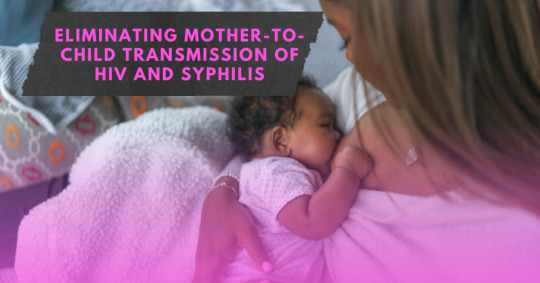
View On WordPress
2 notes
·
View notes
Text
So on Saturday the State Department's Bureau of Global Health Security and Diplomacy issued a memo, seen by Reuters, clarifying that PEPFAR was covered by the Jan. 28 memo and spelling out what activities were allowed.
These include: life-saving HIV care and treatment services, including testing and counseling, prevention and treatment of infections including tuberculosis (TB), laboratory services, and procurement and supply chain for commodities/medicines. It also allows prevention of mother-to-child transmission services.
so as i understand it, we're so back!
#cutting it a bit close but hopefully the clinics will respond quickly#congress could still nix it though :/
1 note
·
View note
Text
Best Doctor for HIV Counselling in Delhi
HIV Counseling: A Crucial Practice for Modern Sexologists
What is HIV? HIV (Human Immunodeficiency Virus) is a virus that weakens the immune system by destroying vital cells that help the body fight off infections. Over time, HIV can lead to severe illnesses as the immune system becomes too weak to defend against common infections.
Globally, over 1.1 million people are living with HIV. A significant challenge is that HIV often remains asymptomatic for years, leaving many unaware they are infected. While there is no cure for HIV, modern medications can effectively manage the virus, keeping individuals healthy and greatly reducing the risk of transmission to others.
The Importance of Counseling for HIV Patients HIV counseling is an essential step for those living with the virus. It helps individuals understand their condition better, navigate their treatment options, and educate their loved ones about prevention and support. Best Doctor for HIV Counselling in Delhi Counseling empowers patients to live a healthy lifestyle despite their diagnosis and to play an active role in spreading awareness within their communities.
At Sidri International Skin Hair and Sexology Clinic, Dr. Manu Rajput and Dr. Kanu Rajput specialize in HIV counseling. With a compassionate and patient-centered approach, they provide the support needed for individuals to maintain a fulfilling and normal lifestyle while managing the condition.

Understanding the Difference Between HIV and AIDS
While HIV is the virus, AIDS (Acquired Immune Deficiency Syndrome) is the most advanced stage of HIV infection. HIV attacks and destroys CD4 cells, which are essential for a functioning immune system. AIDS occurs when the CD4 cell count drops to critically low levels, leaving the body vulnerable to severe infections.
Not everyone with HIV develops AIDS, especially with early diagnosis and proper treatment. Without treatment, HIV can progress to AIDS in about 10 years, but antiretroviral therapy can help individuals live healthy lives for decades.
Causes of HIV
HIV spreads through specific modes of transmission, including:
Unprotected sexual contact with an HIV-positive person (vaginal or anal sex).
Contact with infected blood, such as sharing needles or syringes.
Mother-to-child transmission, during pregnancy, childbirth, or breastfeeding.
It’s important to note that HIV does not spread through casual contact like hugging, kissing, or sharing food and drinks.
Symptoms of HIV
HIV progresses in three stages, each with distinct symptoms:
Stage 1: Acute HIV Infection 1-4 weeks after exposure, some individuals may experience flu-like symptoms as the body reacts to the virus. These symptoms may last for a week or two and include:
Fever
Body rash
Sore throat
Swollen glands
Headache
Joint or muscle pain
Upset stomach
However, many people may show no symptoms at all, making regular testing critical for those at risk.
Raising Awareness through Counseling
Awareness and education are the cornerstone of HIV prevention and management. At Sidri International Skin Hair and Sexology Clinic, Dr. Manu Rajput and Dr. Kanu Rajput provide expert counseling to patients not only in Delhi but also across regions like Haryana, Punjab, Rajasthan, Noida, and Gurgaon. Best Doctor for HIV Counselling in India
Their empathetic approach helps patients understand their condition, break the stigma, and embrace a healthier lifestyle. By fostering a safe environment for open dialogue, the clinic empowers patients to combat societal challenges and lead fulfilling lives.
If you or someone you know is dealing with HIV, professional counseling can be life-changing. Trust the experts at Sidri International for guidance and support.
To See More Information :- https://sidriinternational.in/hiv-doctor-near-me-best-hiv-doctors-in-delhi-for-hiv-counselling-in-delhi/
Contact Us :- +917838963383 +918744095552p
Best sexologist in delhi, Best sexologist in India , Best Ayurvedic Sexologist in delhi , Best Ayurvedic Sexologist in India , Best Doctor for Treatment of Erectile Dysfunction in Delhi , Best Doctor for Premature Ejaculation in Delhi , Best Doctor for Phimosis Without Surgery in Delhi , Best Doctor for Low Sperm Count in Delhi , Best Doctor for Male Infertility in Delhi , Best STI Doctor and STD Specialist in Delhi , Best Doctor for Low Sex Desire in Delhi , Best Doctor for Nightfall in Delhi
0 notes
Text
The Anambra State AIDS Control Agency (ANSACA) has disclosed that 3,138 individuals tested positive for HIV out of 257,953 screened between January and October 2024. This reflects a 1.2% positivity rate over the 10-month period. Dr. Afam Obidike, the Commissioner for Health in Anambra, shared these statistics during a media briefing in Awka on Thursday, in observance of World AIDS Day, celebrated globally every December 1st since 1988. This year’s World AIDS Day theme is: ‘Take the Rights Path, Sustain HIV Response, Stop HIV Among Children to End AIDS in Nigeria by 2030.’ Expansion of comprehensive HIV services Obidike highlighted the state’s progress in combating HIV/AIDS, noting the expansion of comprehensive services to 175 healthcare facilities across Anambra. He stated, “Between January and October 2024, 257,953 individuals were tested for HIV, with 3,138 (1.2%) testing positive. “Notably, 99% of those diagnosed were successfully linked to antiretroviral therapy (ART). Currently, 49,067 individuals living with HIV are receiving antiretroviral treatment.” As part of its prevention efforts, the state, with support from partners, distributed 1,406,744 condoms and 26,640 lubricants to promote safe practices among key populations and the general public. The Commissioner emphasized the critical role of the Prevention of Mother-to-Child Transmission (PMTCT) program in reducing pediatric HIV cases in Anambra State. Obidike revealed that spectrum projections for 2024 estimated 5,167 pregnant women in the state required PMTCT services. “Thanks to the efforts of mentor mothers and community partners, 56,199 antenatal attendees were tested for HIV, resulting in the identification of 560 HIV-positive pregnant women (including known and new cases). All were successfully linked to care,” he stated. He also highlighted the adoption of advanced diagnostics, such as m-PIMA machines for Early Infant Diagnosis, which have enhanced the testing and care of HIV-exposed infants, ensuring healthier outcomes for mothers and their babies. Additionally, Obidike noted that the state government has domesticated the HIV Anti-Discrimination Act to safeguard the rights of People Living with HIV, combat stigma, and address gender-based violence. “The state remains committed to achieving health equity and an AIDS-free future for all residents,” he affirmed. What You Should Know HIV (Human Immunodeficiency Virus) remains a significant public health concern in Nigeria, despite progress in prevention, treatment, and awareness efforts. Nigeria has the second-largest HIV epidemic globally. According to UNAIDS, the national HIV prevalence rate is around 1.3%, with regional variations. Funding gaps, healthcare infrastructure, and social factors like poverty and gender inequality hinder progress. Strengthening community-based interventions and addressing these systemic challenges are critical.

View On WordPress
0 notes
Text
Nigeria: FG Urges Stakeholders To Scale up HIV Prevention Among Children
By Justina Auta The Minister of State for Health and Social Welfare, Dr. Iziaq Adekunle Salako has called on states and stakeholders to increase efforts in preventing mother-to-child transmission of HIV (PMTCT) among children. Adekunle-Salako made this appeal at the 2024 World AIDS Day celebration in Abuja on Tuesday, emphasising the need to sustain the HIV response and end AIDS in Nigeria by…
0 notes
Text
Mother to child HIV transmission continues to be major concern in India
While India has made a significant effort in combating HIV/AIDS, the rate of vertical transmission, which happens from mother to child, remains a major concern in the country, according to a top HIV expert on World AIDS Day on Sunday. However, “vertical transmission continues to be a major concern, because at least one-third of the women who are found HIV positive, do not reconnect with the…
0 notes
Text
“The Last Time”: LA on your break
L = 12
A = 1
12/1:
Eat a red apple day
National Christmas lights day
Wear a dress day
World AIDS day
declared World Aids Day on 12/1/1988…. 7 years, 5 months, and 26 days after the first 5 men were diagnosed with Pneumocystis carinii pneumonia (PCP)
-prior to this on 11/4/1988 President Reagan signs the Health Omnibus Programs Extension (HOPE) Act into law. The legislation authorizes the use of federal funds for AIDS prevention, education, and testing. It is the first comprehensive federal AIDS bill, and it establishes the Office of AIDS Research at the National Institutes of Health (NIH) and the AIDS Clinical Trials Group
As of December 31, 1988, 82,764 cases of AIDS in the United States and its territories had been reported to CDC. Of these cases, more than 46,000 have been fatal
11/28/1988 Elizabeth Glaser an HIV-positive mother of two HIV-positive children forms the Pediatric AIDS Foundation (later renamed the Elizabeth Glaser Pediatric AIDS Foundation
The Foundation funds cutting-edge research that leads to improved treatments for children living with HIV/AIDS and helps to establish protocols to prevent mother-to-child transmission of HIV.
Holy shit the therapy for HIV is ART… like ART “being this young is art” from the song SLUT!
Taylor originally teased the track via a video she posted to her Instagram account on September 19, 2023
“Flamingo pink, Sunrise Boulevard
Clink, clink, being this young is art”
Lines 1 and 2 from Slut! Which is track 17 from 1989 TV (tangerine edition?)
12/17? Or 1+2=3… 3/17 was the first day of tour and the 1989 outfit was pink, not like Flamingo pink but close enough..
12/17 is
National maple syrup… like maple latte?
12/17/1835 - 13 acres of New York City's Financial District are destroyed during the second Great Fire of New York
12/17/1892 - The First issue of Vogue, and American monthly fashion and lifestyle magazine is published
12/17/1903 - The Wright brothers make their first controlled powered, air flight in the Wright Flyer at Kitty Hawk, North Carolina
12/17/1933 - The first NFL Championship Game is played in Chicago at Wrigley Field between the New York Giants and the Chicago Bears who won 23-21
12/17/1967 - The Prime Minister of Australia, Harold Holt is presumed drowned after he disappears while swimming near Portsea, Victoria
12/17/1969 - The United States Air Force closes Project Blue Book, their study of UFO's
12/17/1983 - During his 352nd NHL game, Wayne Gretzky scores a goal & 5 assists for a 8-1 win over the Quebec Nordiques to record his 800th point and 500th assist
12/17/1984 - The first rap album certified Gold is Run-DMC's self titled debut album
12/17/1986 - After reuniting for a benefit concert in Pao Alto, CA, the Doobie Brothers put on a reunion tour and record an album
12/17/1989 - The Simpsons debut on Fox and during Season 3, Michael Jackson, Sting, and Aerosmith guest star
12/17/2016 - Henry Heimlich, American doctor who invented the Heimlich maneuver for chocking victims (b. 1920)
Back to the song Slut! For a second..
So she has been singing about catching lighting in a bottle..
But in this song specifically she is saying “got love-struck went straight to my head” “and if I’m gonna be drunk I might as well be drunk in love”
So the bottle she caught the lighting in is from the alcohol she was consuming as she became a functioning alcoholic with a new aesthetic..
Also “Drunk in Love” is a song by Beyoncé featuring Jay-z. It was released on 12/17/2013 (which is a date I was just writing about above) the song was released as one of the two lead singles from her 5th self titled studio album “XO” was also released on 12/17/2013. -> In 2013 TS was on her Red Tour, which was 4 legs and had 86 shows
***holy moly.
“Cowboy Carter” — “Cowboy like me”
“If I Were a Boy” — “The Man”
And I’m gonna guess there is more….
Beyoncé featuring Destiny’s Child was the halftime show for Super Bowl XLVII on 2/3/2013. It was played at Mercedes Benz Superdome in NOLA. The Ravens beat the 49ers by 3 even tho the bet was 49ers by 4…. Whoopsie-doodle who lost money that day?
-> -> All Too Well (10 minute version) “I’m a soldier who’s returning half here weight”
-> “Soldier” by Destiny’s Child ft T.i and Lil Wayne “Body marked up like the subway in Harlem.” - like the man wall?
This game is also a Michigan connection because Jim Harbaugh (DOB 12/23/1963) the head coach of the 49ers from 2011 to 2014. following his time with the 49ers he became the head coach for the University of Michigan from 2015-2023. he is now the head coach for LA chargers as of 2024. Jim is also from Toledo, OH.
*Also this game was coached by 2 brothers Jim and his older brother John. Both Harbaugh’s, in which they also played against each other in the 2011 Thanksgiving game
His brother John is still the head coach for the Ravens, and look at that the two brothers go head to head again on Monday 11/25/2024 in LA at 8:15 pm.
“All my mornings are Monday stuck in endless February.” - Fortnight
“I want your dreary Mondays” - Paper Rings
The Chargers play the Chiefs in KC on 12/8 the day of the last show..
0 notes
Text
Sexologist Doctor in Delhi
Key Differences between STDs and Sexual Problems
Here are the key differences between sexually transmitted diseases (STDs) and sexual problems like erectile dysfunction (ED) or low libido: STDs are infections caused by bacteria, viruses, or parasites that are transmitted through sexual contact, whereas sexual problems like ED or low libido are typically related to physical, psychological, or hormonal factors affecting sexual function. For those dealing with either STDs or sexual health issues, consulting a sexologist doctor in Delhi can provide the right diagnosis and treatment to improve sexual well-being.
1. Cause:
STDs: Caused by infections, which can be viral, bacterial, or parasitic, such as HIV, herpes, gonorrhea, or chlamydia.
Sexual Problems: Often due to physical, psychological, or hormonal factors. For example, ED can result from blood flow issues, while low libido might be linked to hormonal imbalances, stress, or mental health concerns.
2. Transmission:
STDs: Spread primarily through sexual contact. Some can also be transmitted through non-sexual means like blood transfusion or from mother to child.
Sexual Problems: Not contagious and do not spread from person to person.
3. Symptoms:
STDs: Symptoms can include sores, rashes, discharge, pain during urination, or genital discomfort, but many STDs can be asymptomatic as well.
Sexual Problems: Manifest as difficulties related to sexual function, such as inability to achieve or maintain an erection (ED), reduced sexual desire, or performance issues, without external physical symptoms.
4. Treatment:
STDs: Treated with medication, often antibiotics for bacterial infections or antiviral drugs for viral infections.
Sexual Problems: Managed through a combination of medical treatments , lifestyle changes, or hormonal treatments depending on the underlying cause.
5. Impact on Health:
STDs: Can lead to serious health complications if untreated, such as infertility, organ damage, or increased risk of HIV transmission. For effective STD treatment in Delhi, timely medical intervention is crucial.
Sexual Problems: Primarily affect sexual function and emotional well-being, but do not pose direct physical health risks unless linked to an underlying condition like cardiovascular disease.
6. Prevention:
STDs: Prevented by practicing safe sex, using condoms, getting vaccinated (for HPV and hepatitis), and regular testing.
Sexual Problems: Prevention focuses on maintaining a healthy lifestyle, managing stress, maintaining cardiovascular health, and seeking help for mental health issues.
These distinctions are important for understanding how each condition affects sexual health and overall well-being.
Dr. Vinod Raina, Sexologist Doctor
Address: E-34 Ekta Apartment, saket New Delhi – 110017
Contact: 7687878787, 9871605858
#premature ejaculation treatment in delhi#std treatment in delhi#std clinic near me#sexologist doctor in delhi#best sexologist in south delhi#best sexologist in saket#std doctor in delhi
0 notes
Text

Looking for the best birthing center in jaipur? choose Cocoon Hospital for luxury care and a best delivery experience.
Pregnancy Care
At Cocoon Hospital, The Department of Obstetrics includes a team of expert gynaecologists, IVF Specialist, High risk pregnancies foetal medicine experts, nutritionists, physiotherapists, psychologist and skilled nursing staff. We provide comprehensive care ranging from pre-natal care to post-natal care.
We are also equipped with one of the most advanced neonatal care team supported by best NICU infrastructure to ensure that complex and high-risk pregnancies can be managed including extremely premature birthing.
Prenatal Care
Staying healthy during pregnancy is the utmost important for the mother and baby. Prenatal care is not just for you but for your bundle of joy too so that your journey to Cocoon is happy and a peaceful one.
Reduce the risk of pregnancy complications (if any) by following a safe and healthy diet for proper foetal health and development.
Our team of experts is always available to provide guidance in the entire nine-monthjourney, ensuring the proper and safe medication.
Antenatal Care
ANC is a healthcare service which is beyond maternity care. There are series of consultations, tests, treatments, scans, check-ups, and discussions related to the health of mother and baby.
A high quality prenatal or Antenatal Care (ANC) to educate you and your better half on birth, breastfeeding, delivery, and parenting etc. From minimizing the risk of mother-to-child disease transmission (HIV) to encouraging the use of a skilled birth attendant, ANC is womb-like care that caters to all your needs.
The prenatal classes and the counselling sessions involved in Antenatal Care is assisted and designed by experts, highly accomplished clinicians, and nurses so that you experience the best pregnancy journey. Cocoon delivers the best in women, new-born and children’s healthcare.
read more about us and book your appointment now!
#luxurious pregnancy care center in jaipur#luxury birthing center jaipur#best birthing center in jaipur#best neonatologist in jaipur#laparoscopic myomectomy#pregnancy care hospital in jaipur
0 notes
Text
Maternal Health Knock-on Effects at Large
Women have always been crucial in families, being the skeleton of how the home is structured. I wonder how people survive without a women figure, which I am privileged to have. I realise that this is not a reality for most South Africans. This led me to do some research, to which 42% of households are female-led in South Africa with KZN ranking 3rd for provinces, (Cowling, 2023). Research states that illnesses like HIV are more common in females than men, (Statistics South Africa, 2022). This guided my thoughts into a maze we call societies we live in. I realised that once the mother is infected or sick it affects the child or foetus mostly through mother to child transmission. Therefore, is maternal and child health really important to society?
In KZN communities, which are mostly rural, maternal care services are still difficult to obtain at Primary health care centres, where there are staff shortages, equipment shortages and dysfunctional emergency services, (Sibiya et al., 2023). The mothers get terrible treatment at the hospitals and clinics, such as disrespectful staff, of which most of us have had that experience before. On top of this other socioeconomic factors like those living in rural South Africa struggle with no money to attend clinics, and transport is a problem get there for some, (Ewing et al., 2020). These difficulties in managing maternal health have a knock-on effect on the already critically ill healthcare system. In the sense that these women who had manageable antenatal health problems which were not managed are then circulated in the health system to manage often fatal secondary complications of both mother and child, (Costa et al., 2014). This puts a strain on the hospital which requires more money to keep it facilities functional to accommodate these people. Thus requiring more increases in taxes to generate this money, proves the importance of maintaining maternal health and child health in society.
Research shows that poor communities have reduced antenatal care due to poor education, having no paternal support and having multiple children among other factors, (Rosa et al. 2014). This could lead to premature pregnancy, low birth weight and increased maternal and child mortality, (Rosa et al. 2014). Untreated hypertension during pregnancy increases the chance of CVA during childbirth, heart diseases and foetal growth restriction. These conditions would now require a multidisciplinary team approach, like for example Occupational Therapists. This can assist the baby meet all developmental milestones if for example they were born prematurely as a result of poor antennal care. They would also look to improve the occupational function of the baby’s mother with the CVA through intervention. Of course, this is difficult with this being South Africa. In rural clinics, therapists usually do outreach once a month making it difficult to keep track of intervention progress. Often the therapist will not have enough equipment like splinting material or adequate assistive devices. The clients thus struggle to get to the clinics meaning that the therapist has to do home visits. Where they struggle as the client demand is high in the communities where both mother and child need assistance. Often times adaptations need to be made at a ground level with what the client has in the home, where there is collaboration between the client and therapist.
In conclusion, it is vital importance that we take care of our mothers so they can take care of our future presidents of this nation and society. It is crucial that as healthcare workers we understand our privilege and to stay true to our oaths and remind ourselves why we started. Which was to help those who are in need, provide information to those who lack knowledge and assist those mothers who already go through a lot to get the antenatal care they need. The knock-on effect of neglected antenatal care has devastating consequences for the mother, the child, the community, society and the economy. Therefore, it is crucial that we come to grips with the importance of maternal and child health.
reference list
Mlotshwa, P. R., & Sibiya, M. N. (2023). Pregnant Women's Views Regarding Maternity Facility-Based Delivery at Primary Health Care Facilities in the Province of KwaZulu-Natal in South Africa. International journal of environmental research and public health, 20(15), 6535. https://doi.org/10.3390/ijerph20156535
Morris-Paxton, A. A., Reid, S., & Ewing, R. G. (2020). Primary healthcare services in the rural Eastern Cape, South Africa: Evaluating a service-support project. African journal of primary health care & family medicine, 12(1), e1–e7. https://doi.org/10.4102/phcfm.v12i1.2207
Rosa, C. Q., Silveira, D. S., & Costa, J. S. (2014). Factors associated with lack of prenatal care in a large municipality. Revista de saude publica, 48(6), 977–984. https://doi.org/10.1590/S0034-8910.2014048005283
Maternity | High Blood Pressure During Pregnancy Risks | Corewell Health. (2024). Beaumont.org. https://www.beaumont.org/conditions/pregnancy-high-blood-pressure#:~:text=High%20blood%20pressure%20during%20pregnancy%20can%20place%20extra%20stress%20on
South Africa: female-headed households, by province. (n.d.). Statista. https://www.statista.com/statistics/1114301/distribution-of-female-headed-households-in-south-africa-by-province/
0 notes